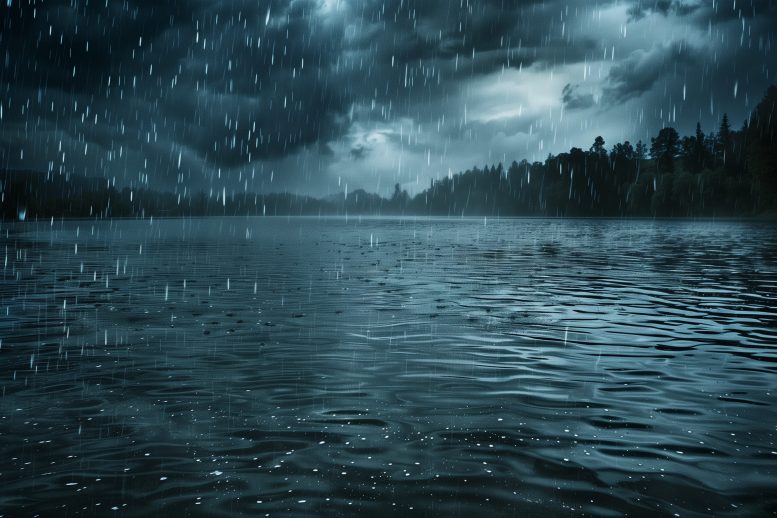
Research on PFAS in the Great Lakes reveals consistent concentrations from precipitation across all lakes, with variable removal rates influencing their persistence. These findings come amid regulatory changes by the EPA classifying certain PFAS as hazardous substances, highlighting the importance of the Great Lakes as a freshwater source and underscoring the need for continued monitoring and regulation to mitigate pollution.
A study on PFAS in the Great Lakes shows uniform pollution levels from precipitation and differing rates of chemical removal across the lakes, emphasizing the need for enhanced regulatory measures.
Perfluoroalkyl and polyfluoroalkyl substances (PFAS), commonly referred to as “forever chemicals,” are enduring environmental contaminants found in air, water, and soil. Their chemical stability allows them to circulate through the water cycle, infiltrating sources of drinking water and precipitation. Research reported in the American Chemical Society’s journal Environmental Science & Technology indicates that precipitation deposits roughly equal quantities of PFAS into each of the Great Lakes; however, the lakes eliminate the chemicals at different rates.
Consuming PFAS has been linked to negative health outcomes. And in April 2024, the U.S. Environmental Protection Agency (EPA) designated two forever chemicals — PFOS and PFOA — as hazardous substances, placing limits on their concentrations in drinking water. The Great Lakes are a major freshwater source for both the U.S. and Canada, and the EPA reports that the surrounding basin area is home to roughly 10% and 30% of each country’s population, respectively. Previous studies demonstrated that these lakes contain PFAS. But Marta Venier at Indiana University and colleagues from the U.S. and Canada wanted to understand where the compounds come from and where they go.
Research Methodology and Findings
Between 2021 and 2022, 207 precipitation samples and 60 air samples were taken from five sites surrounding the Great Lakes in the U.S.: Chicago; Cleveland; Sturgeon Point, N.Y.; Eagle Harbor, Mich.; and Sleeping Bear Dunes, Mich. During the same period, 87 different water samples were collected from the five Great Lakes. The team analyzed all the samples for 41 types of PFAS and found:
- In precipitation samples, PFAS concentrations largely remained the same across sites, suggesting that the compounds are present at similar levels regardless of population density.
- In air samples, Cleveland had the highest median concentration of PFAS and Sleeping Bear Dunes the lowest, suggesting a strong connection between population density and airborne PFAS.
- In the lake water samples, the highest concentration of PFAS were in Lake Ontario, followed by Lake Michigan, Lake Erie, Lake Huron, and Lake Superior.
- The concentration of PFOS and PFOA in lake water decreased compared to data from previous studies as far back as 2005, but the concentration of a replacement PFAS known as PFBA remained high, suggesting that further regulation efforts may be needed.
The team calculated that airborne deposition from precipitation is primarily how PFAS get into the lakes, while they’re removed by sedimentation, attaching to particles as they settle to the lakebed or flowing out through connecting channels. Overall, their calculations showed that the northernmost lakes (Superior, Michigan, and Huron) are generally accumulating PFAS. Further south, Lake Ontario is generally eliminating the compounds, and levels in Lake Erie remain at a steady state. The researchers say that this work could help inform future actions and policies aimed at mitigating PFAS’ presence in the Great Lakes.
Reference: “The Ins and Outs of Per- and Polyfluoroalkyl Substances in the Great Lakes: The Role of Atmospheric Deposition” by Chunjie Xia, Staci L. Capozzi, Kevin A. Romanak, Daniel C. Lehman, Alice Dove, Violeta Richardson, Tracie Greenberg, Daryl McGoldrick and Marta Venier, 16 May 2024, Environmental Science & Technology.
DOI: 10.1021/acs.est.3c10098
The authors acknowledge funding from the Great Lakes Restoration Initiative from the U.S. Environmental Protection Agency’s Great Lakes National Program Office.









Be the first to comment on "Toxic Downpour: “Forever Chemicals” Rain on All Five Great Lakes"